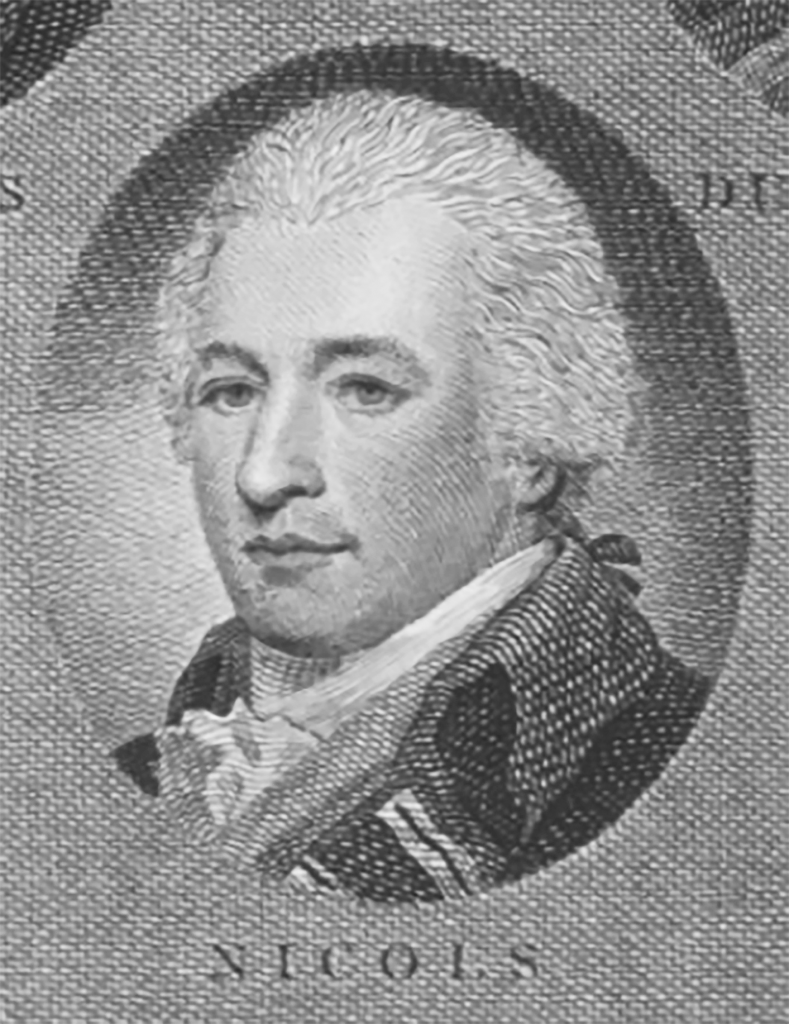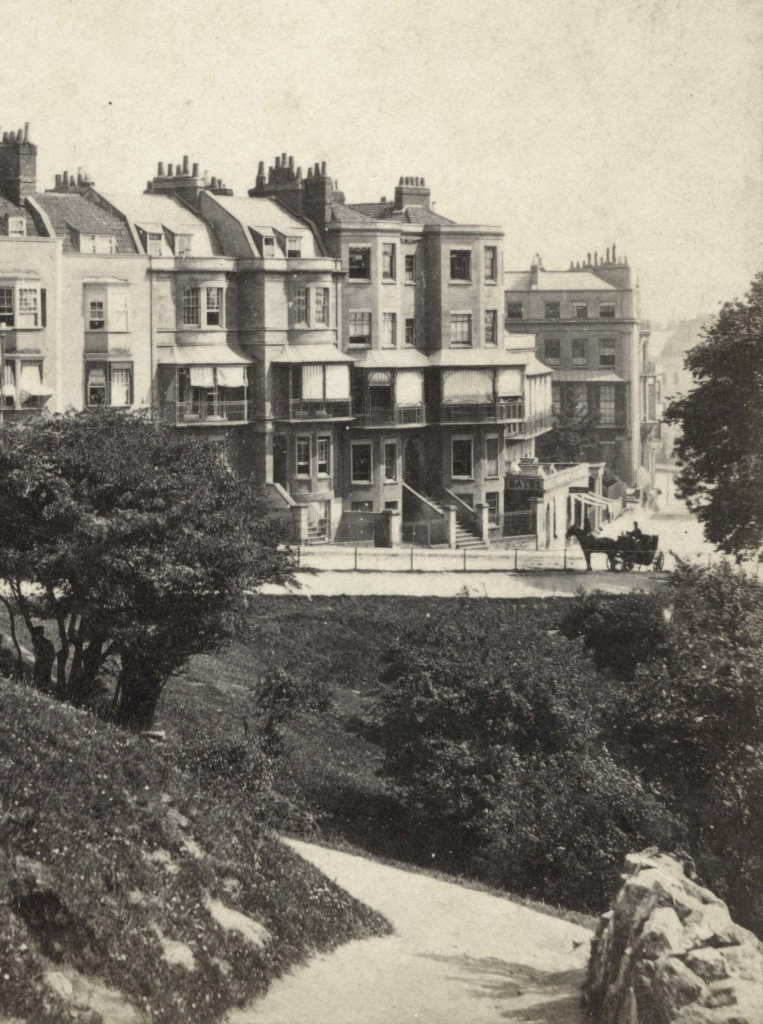Last month we featured some of the Eighteenth Century letters written between Katherine Southwell and her son Ned Southwell; these mentioned the estate manager, or Steward, called Mr Nicholls. By chance an interesting snippet of history relating to him fell into our laps just recently.
We now know that Mr. Nicolls Christian name was Edward, and he was a Gloucestershire man born around 1723. He married Mary Churchill of Clifton in 1743, and is known to have held the key role of Steward at Kings Weston for at least 24 years, between 1755 and 1779. Whilst living and working at Kings Weston the couple had around 10 children. Katherine’s letters reveal that one of them, Ned Nicholls, had a nasty accident falling of a wall onto spikes behind the house, but was unharmed. She also mentions the eldest daughter, Betty, who she suggests might be available to act as her maid to attend her on a trip to Kings Weston, so was presumably also employed at the house. It was, however, another of their sons, Henry, who would go on to far greater things.

Henry was baptised in Henbury church in 1759. His father, aged 36, was already established in the management of the house and estate for the young Ned Southwell. Ned had recently embarked on his Grand Tour of Europe, but on his return seems to have taken an interest in Henry.
Henry took a keen interest in ships he’d regularly have seen arrayed below Kings Weston house, sailing to-and-from Bristol’s docks, and moored in Hung Road waiting for the tide. It was said of him that he “was born of the winds, and cradled in the storm”, and a fascination for the sea no doubt developed from an early age. He reputedly displayed an honest bluntness that earned the respect of Ned Southwell. Recognising the bright nature of the child, and his eagerness to join the navy, Ned arranged schooling for him in Yorkshire, before, in 1774, aged around sixteen, he joined the Royal Navy.

From his beginnings at Kings Weston, and through the support of Ned Southwell, Henry rose through the ranks of the Royal Navy, first being stationed in Guinea, before involvement in naval skirmishes of the American Wars of Independence. During this period he was promoted to Lieutenant, at the age of just 21. By 1781 he was made Commander of HMS Barracouta, and in 1791 had worked his way up to Flag Captain, commanding HMS Formidable, Flagship of Rear-Admiral Leveson-Gower. His next commission was the flagship Royal Sovereign which, in 1794, he commanded fighting against the French Revolutionary fleet in the Battle of the Glorious First of June, an action in which he performed so honourably he was awarded a gold medal.
He was promoted to Rear-Admiral in 1807, and Vice-Admiral four years later, knighted, and then appointed an Admiral in 1825. Admiral Sir Henry Nicholls, as he then was, retired from the Navy and returned to Bristol, but not Kings Weston itself where few would remember him from his childhood there. Ned Southwell, his biggest supporter, had died young in 1777, and most of the staff had been laid off during the minority of his son, Edward.

Henry resided at Sion House in Clifton for the remainder of his life. Described in old age as “stoutly-built and above the middle stature. A direct, un-affected man who in later life was regarded benevolently as a rough, kind, seaman, he was an avid snuff-taker”. His 1830 obituary recorded “Sir H. Nicholls, though a strict officer, was still admired and respected, not more for his uniform zeal, perseverance, and ability, than for his excellent disposition, which displayed the kindest heart of a rough seaman in all his dealings with mankind.” Appropriately he was buried in the church where he’d been baptised, back in Henbury.
Strangely, for such a high-ranking Naval officer, with a glowing war record, there is little written about him, and less still on his connections to Kings Weston. Even his final home on Sion Hill lacks a blue plaque. Perhaps this son of Kings Weston deserves to be better know.


